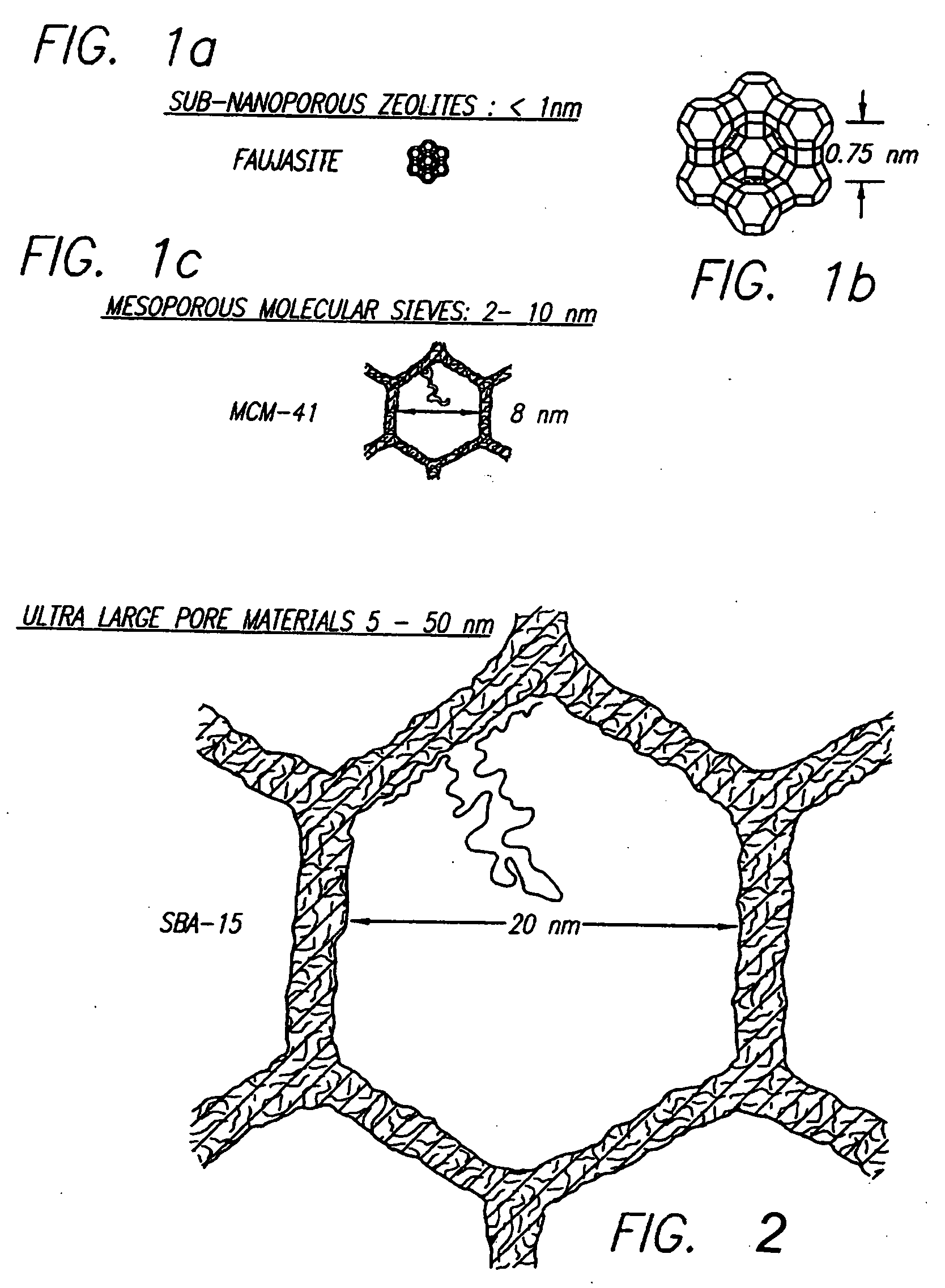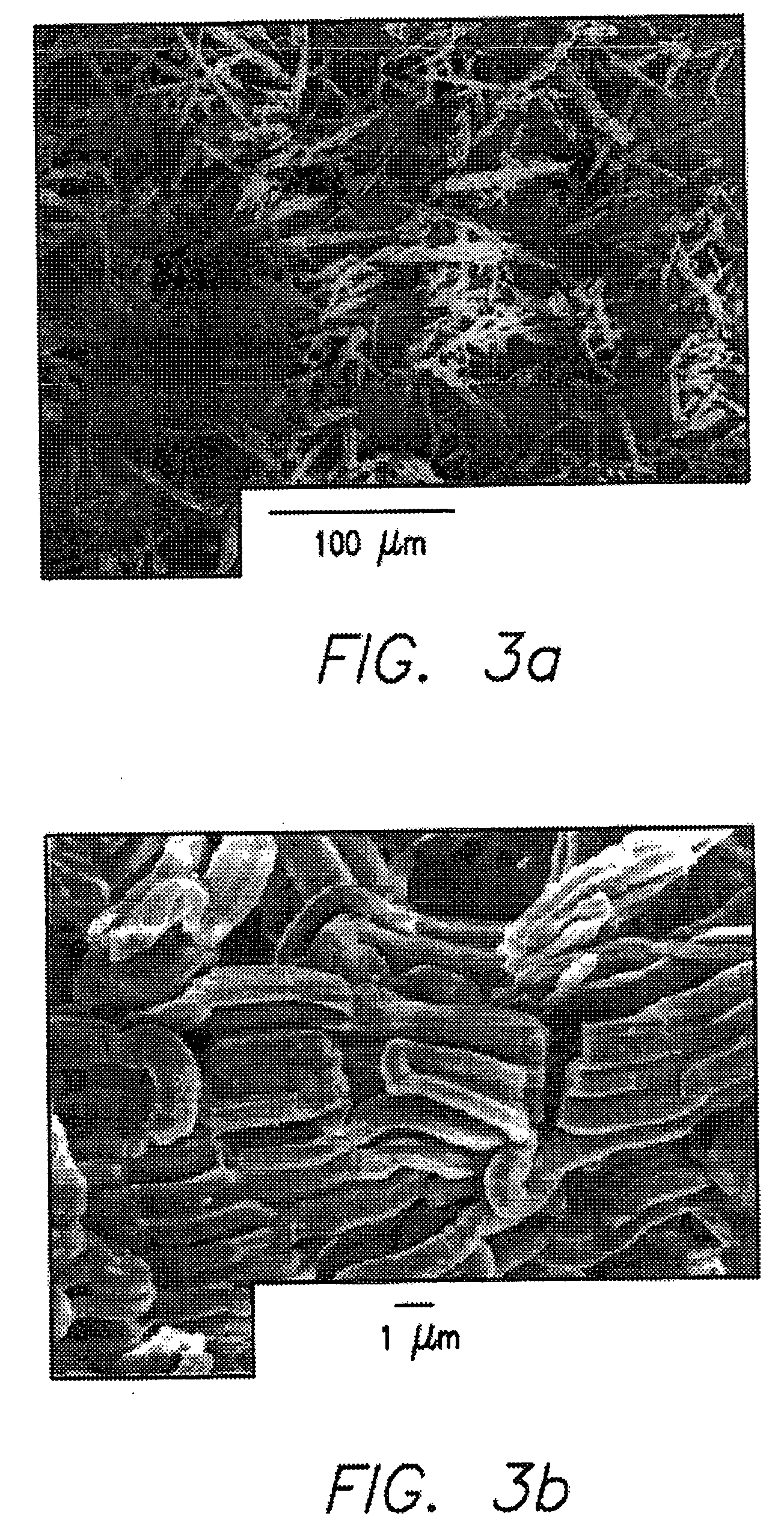Block polymer processing for mesostructured inorganic oxide materials
a technology of inorganic oxide and polymer, which is applied in the direction of chemical/physical processes, peptides, water/sewage treatment by ion exchange, etc., can solve the problems of poor thermal stability, and significant hinderance of applications, and achieves large surface area, high bet surface area, and high electrolyte strength of inorganic salts
- Summary
- Abstract
- Description
- Claims
- Application Information
AI Technical Summary
Benefits of technology
Problems solved by technology
Method used
Image
Examples
Embodiment Construction
[0083] This invention provides a simple and general procedure for the syntheses of ordered large-pore (up to 14 nm) mesoporous metal oxides, including TiO2, ZrO2, Nb2O5, Ta2O5, Al2O3, SiO2, WO3, SnO2, HfO2 and mixed oxides SiAlO3.5, SiAlO5.5, Al2TiO5, ZrTO4, SiTiO4. Commercially available, low-cost, non-toxic, and biodegradable amphiphilic poly(alkylene oxide) block copolymers can be used as the structure-directing agents in non-aqueous solutions for organizing the network forming metal species. Preferably the block copolymer is a triblock copolymer in which a hydrophilic poly(alkylene oxide) such as poly(ethylene oxide (EOx) is linearly covalent with the opposite ends of a hydrophobic poly(alkylene oxide) such as polypropylene) oxide (POy) or a diblock polymer in which, for example, poly(ethylene oxide) is linearly covalent with poly(butylene oxide) (BOy). This can variously be designated as follows: [0084] poly(ethylene oxide)-poly(propylene oxide)-poly(polyethylene oxide) [0085] ...
PUM
| Property | Measurement | Unit |
|---|---|---|
| sizes | aaaaa | aaaaa |
| sizes | aaaaa | aaaaa |
| pore sizes | aaaaa | aaaaa |
Abstract
Description
Claims
Application Information
 Login to View More
Login to View More - R&D
- Intellectual Property
- Life Sciences
- Materials
- Tech Scout
- Unparalleled Data Quality
- Higher Quality Content
- 60% Fewer Hallucinations
Browse by: Latest US Patents, China's latest patents, Technical Efficacy Thesaurus, Application Domain, Technology Topic, Popular Technical Reports.
© 2025 PatSnap. All rights reserved.Legal|Privacy policy|Modern Slavery Act Transparency Statement|Sitemap|About US| Contact US: help@patsnap.com



